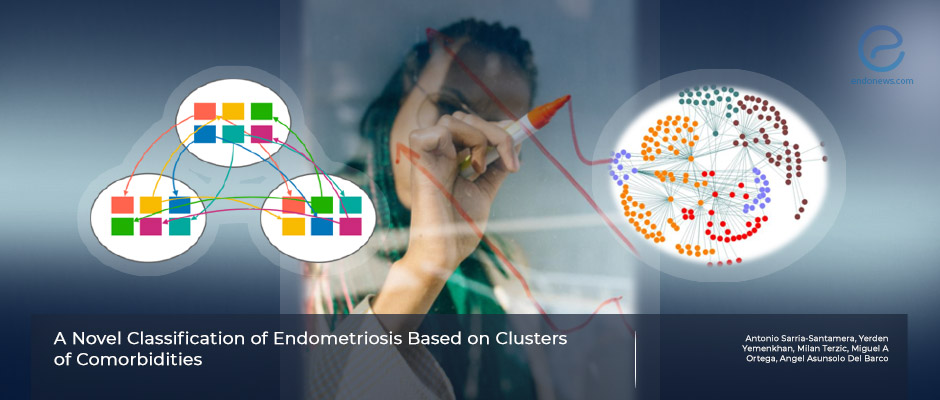Endometriosis as a "syndrome" made out of different clusters
Oct 16, 2023
Grouping out to solve it better
Key Points
Highlights:
- Grouping the patients by their additional comorbidities may represent diverse "endometriosis routes" and could have implications for personalized treatment approaches.
Importance:
- Clustering may help group patients with similar comorbidities together, providing insights into the multi-dimensionality of endometriosis and potentially associated molecular and biochemical mechanisms.
What's done here:
- The study aimed to identify clusters of women with endometriosis based on comorbidities.
- The researchers analyzed the data extracted from the Spanish National Health System including all visits of women aged 16-65 registered with their primary healthcare centers in 6 Spanish regions.
- The study identified six clusters of women with endometriosis: cluster 1 (less comorbidity), cluster 2 (anxiety and musculoskeletal disorders), cluster 3 (type 1 allergy or immediate hypersensitivity), cluster 4 (multiple morbidities), cluster 5 (anemia and infertility), and cluster 6 (headache and migraine).
Key Results:
- Data were available from 4055 women aged between 21 and 50 with endometriosis.
- Anxiety, headache/migraine, upper respiratory tract infection Cluster 1 (less comorbidity) has the second largest number of patients (n = 1212).
- Patients in cluster 2 were low but had multiple clinical visits related to comorbidities, (anxiety (73.85%), headache/migraine (68.55%), urinary infection (51.59%), chronic/allergic rhinitis (48.6%), bursitis/tendinitis (44.88%), anemia (31.1%), and elevated cholesterol (31.8%)).
- Cluster 3 (anxiety and musculoskeletal disorders) is the largest in terms of patients (n = 1334).
Limitations:
- Data extracted from electronic records of primary care, and has limitations regarding the accuracy, completeness, and consistency of the recorded information.
- The generalizability of the results to populations other than the Spanish is not known.
Lay Summary
Endometriosis has been classified according to surgical findings. In the study conducted by Antonio Sarria-Santamera et al., the authors aimed to classify the patients with their comorbidities.
The study explored the multidimensionality of endometriosis using cluster analysis. It categorizes women with endometriosis into six clusters based on their comorbidities: clusters 1 to 6 where cluster 1 (less comorbidity), cluster 2 (anxiety and musculoskeletal disorders), cluster 3 (type 1 allergy or immediate hypersensitivity), cluster 4 (multiple morbidities), cluster 5 (anemia and infertility), and cluster 6 (headache and migraine).
The findings suggest diverse relationships between endometriosis and various comorbid conditions, possibly occurring at clinical, biochemical, or molecular levels.
Most women can be separated into specific clusters, but one-third do not have a significant association with comorbidities. A small cluster (7%) may represent diverse "endometriosis routes" linked to different plausible but unconfirmed pathogenic pathways.
The study has several limitations, including potential misclassification bias, under-diagnosis of cases, and insufficient data on disease extent, time since diagnosis, symptoms, and treatments received. Still, it gives a point of view to all clinicians to question comorbidities and think twice about what could change patients' evaluation according to their additional diagnosis.
This article was published in the September 2023 issue of the journal Biomedicines.
Research Source: https://pubmed.ncbi.nlm.nih.gov/37760889/
clustering patients new classification
DISCLAIMER
EndoNews highlights the latest peer-reviewed scientific research and medical literature that focuses on endometriosis. We are unbiased in our summaries of recently-published endometriosis research. EndoNews does not provide medical advice or opinions on the best form of treatment. We highly stress the importance of not using EndoNews as a substitute for seeking an experienced physician.<< Previous Article

